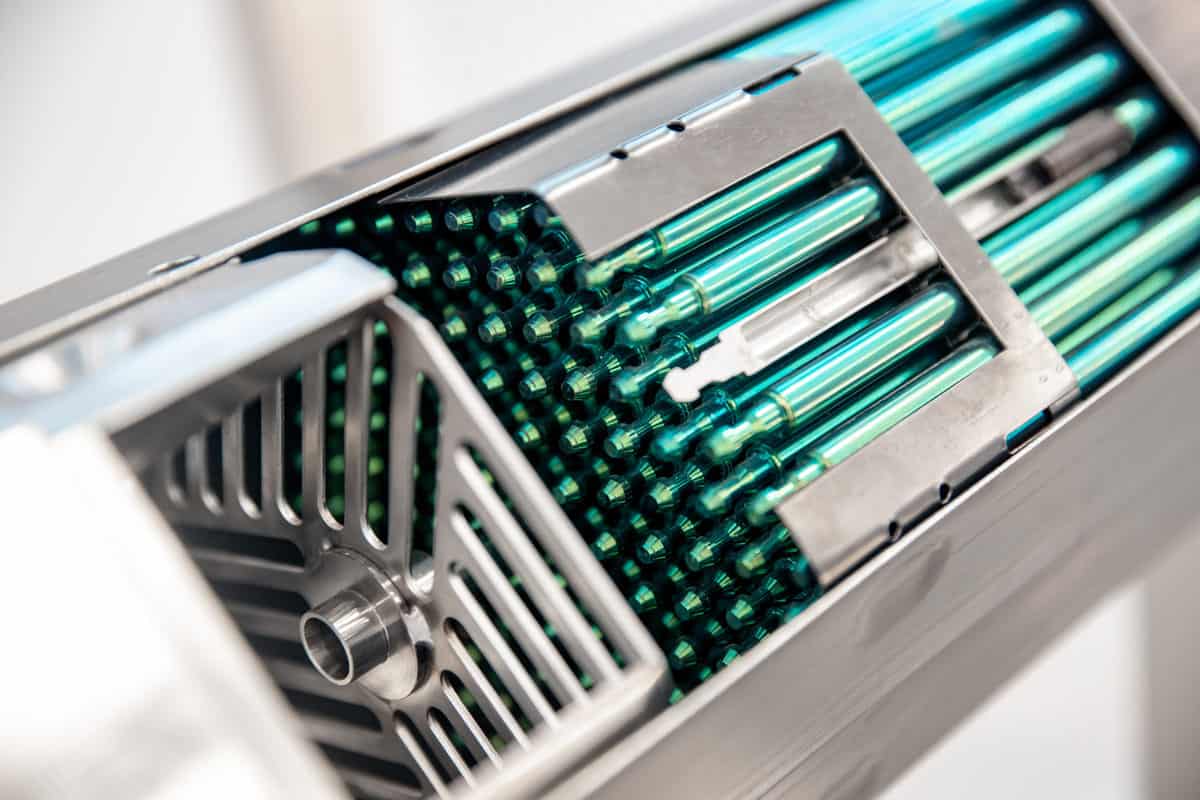Situation Report: Evaluating the Recent Sabotage of Iran’s Uranium Centrifuge Facility

Fragment fuel uranium rod element of nuclear reactor.
In response to recent sabotage of Iran’s Natanz uranium centrifuge facility, Iran’s ambassador to the International Atomic Energy Agency (IAEA) announced on April 13 that Iran will begin next week enriching uranium to the 60% uranium-235 level. France immediately said “Iran’s move is a serious step that demands the coordination of the superpowers.” The United States added it is “concerned that Iran will enrich to the 60% level, and that it considers these reports as serious.”
Simultaneously, the head of Iran’s Parliament Research Center said this incident “caused damage to thousands of centrifuges, and therein neutralized Iran’s ability to continue the enrichment process.” According to another Iranian official, the explosion occurred 50 meters underground at the Natanz facility.
These assessments by Iranian officials are likely correct: Iran’s enrichment effort is anchored mostly to the Natanz facility which they thought impervious to attacks since it is in a vast structure deep underground. The other enrichment facility, Fordo, is believed to be too small to support any large-scale enrichment activity. Iran’s enrichment program thus is suffering from the bottleneck at Natanz.
An even more stunning and uncharacteristically honest appraisal was given by the head of Iran’s parliamentary energy committee, Fereydoun Abassi, on April 13 when he said “The enemy’s plot was very beautiful … They thought about this and used their experts and planned the explosion so both the central power and the emergency power cables would be damaged.” A senior official in the Iranian Atomic Energy Organization, Behrouz Kamalvandi, added that the blast left a hole 20 feet deep, into which he fell.
To date, Israel has not claimed credit for the attack, although it has not denied responsibility. Iran and Western officials have strongly suggested Israel was behind the attack.
There have been several recent Iranian-backed attacks on Israel – a major environmental attack of tar along Israel’s entire Mediterranean coast last month and several attacks on Israeli shipping on the high seas. These attacks resulted in several Israel responses, including disabling an Iranian Revolutionary Guard Corps ship in the Red Sea that was serving as a logistical, command and operational hub of Iranian activity in Yemen and Bab-al-Mandab in recent weeks.
It appears that although the Iranians suffered a devastating blow to their nuclear program due to sabotage of the Natanz enrichment facility, they will nonetheless use escalation and an atmosphere of crisis – including the dubious boast of accelerated enrichment to 60% — to unnerve Western diplomats and nurture a sense of urgency and looming war. Tehran hopes this crisis atmosphere will lead Western capitals to precipitously yield to its demands on negotiating a possible re-entry into some form of the 2015 nuclear deal (the JCPOA) and create new tension between Jerusalem and its allies.
The Biden Administration, which is eager for the U.S. to re-enter the JCPOA, will welcome and exploit the induced sense of urgency Iran is fomenting to pursue a flawed deal.
Iran also hopes, along with China, to deflect the debate from Iran and onto Israel’s nuclear program in the framework of advocating regional “Nuclear Weapons Free Zone” idea, the opposition to which is enshrined in several Israel-US agreements going back a half-century.
- Saudi Crown Prince’s Visit Restored an Important Relationship: Dr. Wurmser - November 24, 2025
- The Dick Cheney I Knew - November 5, 2025
- “His intellect, image, and integrity made him such a convincing figure”: Dr. Wurmser on Dick Cheney - November 4, 2025
